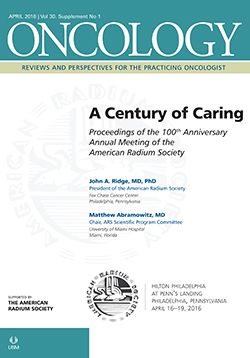(S022) Gender Differences in Time to Promotion and Scholarly Activity Among Academic Radiation Oncologists
Although the female RO full professors in our cohort were similar overall in terms of productivity and NIH funding to their male colleagues, they tended to have longer times to promotion earlier in their careers at lower academic ranks. Women may experience barriers to productivity early in their careers that may delay promotion.
Subha Perni, Reshma Jagsi, MD, DPhil, Mehee Choi, MD, Lynn D. Wilson, MD, Charles R. Thomas, Jr, MD, Clifton D. Fuller, MD, PhD, Emma B. Holliday, MD; Department of Radiation Oncology, Columbia University/New York Presbyterian Hospital; Department of Radiation Oncology, University of Michigan; Department of Radiation Oncology, Loyola University Chicago; Department of Therapeutic Radiology, Yale School of Medicine and Yale Cancer Center; Department of Radiation Medicine, Knight Cancer Institute, Oregon Health and Science University; Division of Radiation Oncology, UT MD Anderson Cancer Center
PURPOSE: To characterize the longitudinal relationship by gender between publication productivity, NIH funding, and academic promotion of current US academic professors of radiation oncology (RO).
METHODS: For full professors of RO departments, institutional websites were accessed to obtain training information and promotion dates. A commercial database (SCOPUS, Elsevier BV, Amsterdam, the Netherlands) was used to obtain productivity metrics, including publication number, citation number, and Hirsch index (h-index) at the time of each promotion, and National Institutes of Health (NIH) RePORTER (Research Portfolio Online Reporting Tools) was used to obtain NIH funding information. Pearson chi-square test and Wilcoxon rank-sum tests were used for comparisons of variables between men and women.
RESULTS: For 166 RO faculty full professors, there were no significant differences in degree, additional residency and fellowship training, year of RO residency graduation, number of institutions worked at as faculty, NIH funding status, number of publications, citations, h-indices, or m-indices. Women had a longer median time to promotion from assistant to associate professor when compared with men (8 yr, interquartile range [IQR]: 6–11 vs 6 yr, IQR: 5–8 yr; P = .049), as well as longer median time from associate to full professor (6 yr, IQR: 6–11 yr vs 5 yr, IQR: 4–6 yr; P = .004). However, there was no significant difference in time to appointment as chairperson. The h-index and NIH funding at promotion were not significantly different by gender at any of the promotion levels.
CONCLUSIONS: Although the female RO full professors in our cohort were similar overall in terms of productivity and NIH funding to their male colleagues, they tended to have longer times to promotion earlier in their careers at lower academic ranks. Women may experience barriers to productivity early in their careers that may delay promotion.
Proceedings of the 98th Annual Meeting of the American Radium Society - americanradiumsociety.org

Newsletter
Stay up to date on recent advances in the multidisciplinary approach to cancer.